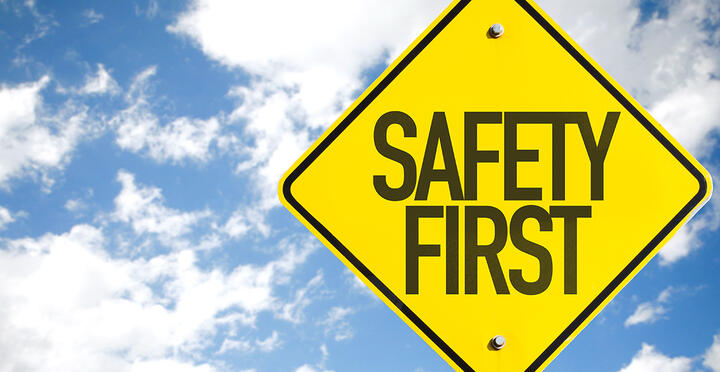Does Your Business Have an Effective Safety Policy in Place?

Your company is your people – and you don’t want to see them sick or hurt, especially on your watch. Every day, each employee should feel assured they’ll go home the same way they arrived on the job: safe and injury free.
Also, consider the price tag of safety incidents. According to the 2017 Liberty Mutual Workplace Safety Index, injuries and accidents that caused employees to miss six or more days of work cost U.S. employers $59.9 billion in 2014 – the latest year for which statistically valid data was available.
Components of a Safety Policy
Your robust safety policy documents the principles, objectives, obligations and commitments that guide health and safety decision-making throughout your organization. Your safety policy should document:
- What is expected of your employees; namely, the behavior and performance standards that help ensure a safe workplace.
- Consistent, clear responses across your company in dealing with safety issues and situations.
- Your good faith that all workers will be treated fairly and equally.
- A means of communicating safety information to both new and existing employees.
Safety Makes Sense
In addition to preserving the health and well-being of your people, your safety policy is critical because:
- Safety is the law. To stay in business, you need to remain in compliance with OSHA laws and regulations that apply to companies throughout the country.
- It makes financial sense. When an employee is injured, some aspect of your business operation is compromised. Lost productivity is compounded if the incident results in an investigation. All or part of your company could be shut down pending the findings, and you may be liable for costly fines. Not to mention an almost certain jump in your workers’ compensation premiums.
- It boosts morale and your reputation. When workers see their safety really matters, they feel more valued by their employer. This leads to greater job satisfaction and engagement. From a PR standpoint, a workplace with a solid safety record is visibly noticeable – and word spreads quickly. Conversely, if your job site is investigated or shut down, you can expect press releases from government agencies, mentioning your company by name.
Where to Start
When it comes to workplace safety, it’s up to you to ensure your company is committed to a zero incident culture. Your safety policy should be viewed as an opportunity to care for your employees, protect your business financially, enhance morale and put your organization’s best foot forward. For starters, it should cover:
- Personal protective equipment (PPE): Do your employees have the necessary clothing, eye protection, gloves, head and face gear, and other equipment specifically designed to protect them from on-the-job hazards?
- Chemical standards: OSHA’s Hazard Communication Standard sets guidelines in the U.S. Employees need to know the symbols denoting hazardous materials and all the steps and precautions to use when handling them.
- First aid: Do all workers have access to the emergency materials needed in the event of an accident, however minor? Are they trained in CPR and other life-saving measures?
Do you need help developing your safety policy?
When it comes to this and all your talent management needs, consider partnering with Frontline Source Group to help lighten your HR team’s load. To get in touch with our staffing service in Plano, TX, click here. Contact us to find the branch nearest to you or read our related posts to learn more!
Tagged Blog
Published on Jan 7, 2019